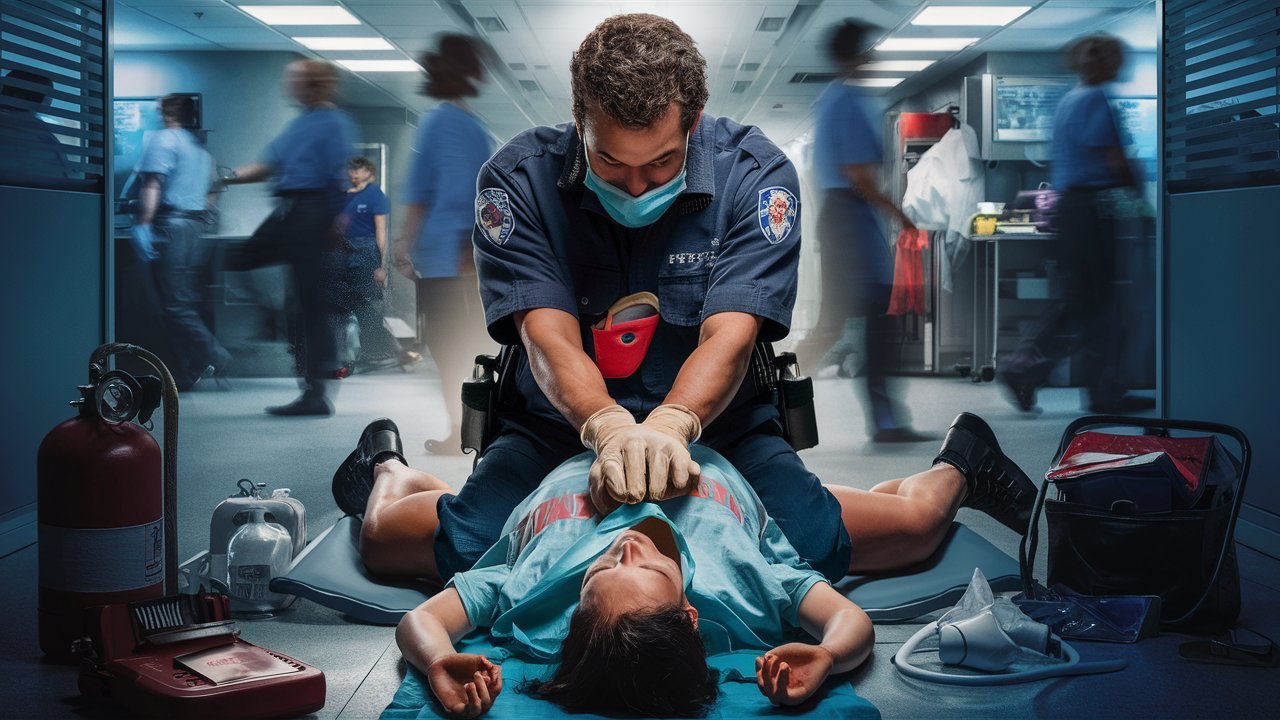In today’s unpredictable world, being prepared for emergencies is more crucial than ever. Whether it’s a sudden cardiac arrest, drowning incident, or any other life-threatening situation, having the right equipment and knowledge can make all the difference. Emergency equipment resuscitation encompasses a range of tools and techniques aimed at restoring vital functions and saving lives. Let’s delve into the world of emergency equipment resuscitation to understand its importance and the essential gear required.

Understanding the Importance of Emergency Equipment Resuscitation
Emergencies can strike at any moment, catching us off guard and potentially leading to tragic outcomes. However, with proper preparation and access to the right equipment, individuals can significantly improve their chances of survival and minimize the impact of emergencies. Emergency equipment resuscitation plays a vital role in providing immediate assistance to individuals experiencing medical crises, such as cardiac arrest, respiratory failure, or trauma injuries.
In critical situations where every second counts, having access to emergency equipment can mean the difference between life and death. Whether it’s administering cardiopulmonary resuscitation (CPR), defibrillation, or controlling severe bleeding, the timely intervention facilitated by emergency equipment can stabilize patients and increase their chances of survival.
The Essential Gear for Emergency Equipment Resuscitation
1. Automated External Defibrillator (AED)
An AED is a portable device that delivers an electric shock to the heart to restore normal rhythm in cases of sudden cardiac arrest. These devices are user-friendly and can be operated by individuals with minimal training, making them indispensable in public places, workplaces, and healthcare settings.
2. Bag-Valve-Mask (BVM) Resuscitator
A BVM resuscitator is a handheld device used to provide positive pressure ventilation to patients who are not breathing adequately. It consists of a self-inflating bag, a valve system, and a mask, allowing rescuers to manually deliver breaths to the patient’s lungs.
3. Airway Management Devices
Airway management devices, such as endotracheal tubes, laryngeal mask airways (LMAs), and supraglottic airway devices, are essential for maintaining a clear airway and ensuring adequate oxygenation and ventilation in patients with compromised respiratory function.
4. Hemostatic Agents
Hemostatic agents, such as gauze impregnated with clotting agents like kaolin or chitosan, are used to control severe bleeding in trauma patients. These agents promote blood clotting and help stem the flow of blood from wounds, providing vital time for further medical intervention.
5. Tourniquets
Tourniquets are devices used to apply pressure to a limb to control life-threatening bleeding. When properly applied, tourniquets can help prevent exsanguination and buy time for advanced medical care to be administered.

Effective Techniques in Emergency Equipment Resuscitation
In addition to having the right equipment, proper training and knowledge of resuscitation techniques are paramount in effectively managing emergency situations. Some key techniques include:
High-Quality CPR
High-quality CPR involves performing chest compressions and providing rescue breaths (if trained) to maintain blood circulation and oxygenation in a cardiac arrest patient. Proper compression depth, rate, and recoil are essential for optimizing outcomes.
Early Defibrillation
Early defibrillation with an AED is critical in restoring normal heart rhythm in sudden cardiac arrest patients. Initiating defibrillation within minutes of collapse can significantly improve survival rates.
Control of Bleeding
Effective control of bleeding using direct pressure, elevation, and the application of hemostatic agents is vital for preventing hemorrhagic shock and preserving vital organ function in trauma patients.
Airway Management
Maintaining a clear airway and ensuring adequate oxygenation through techniques such as head tilt-chin lift, jaw thrust, and insertion of advanced airway devices are essential priorities in resuscitation efforts.
Emergency Equipment Resuscitation: Saving Lives One Step at a Time
In conclusion, emergency equipment resuscitation is a critical component of modern healthcare and emergency response systems. By investing in the right equipment, training, and techniques, individuals and organizations can significantly improve their ability to respond effectively to medical emergencies and save lives. Whether it’s administering CPR, using an AED, or controlling severe bleeding, every action taken in the chain of survival contributes to better outcomes for patients in crisis situations.
FAQs (Frequently Asked Questions)
Q: How do I perform CPR on an adult?
Performing CPR on an adult involves placing the heel of one hand on the center of the chest, interlocking the fingers, and delivering compressions at a rate of 100-120 per minute.
Q: What should I do if someone is choking?
If someone is choking, encourage them to cough forcefully. If coughing is ineffective, perform abdominal thrusts (Heimlich maneuver) to dislodge the obstruction.
Q: When should I use an AED?
An AED should be used as soon as possible on a person who is unresponsive and not breathing normally. Follow the device’s prompts and apply pads as instructed.
Q: How can I control severe bleeding?
To control severe bleeding, apply direct pressure to the wound using a clean cloth or bandage. If bleeding persists, apply a tourniquet above the wound if possible.
Q: What is the recovery position, and when should it be used?
The recovery position is a way of placing an unconscious but breathing person on their side to maintain an open airway and prevent aspiration. It should be used when an individual is unconscious but breathing.
Q: Is it safe to use hemostatic agents on all types of wounds?
Hemostatic agents are generally safe to use on most types of wounds, but they should be applied according to manufacturer instructions and healthcare provider recommendations.

